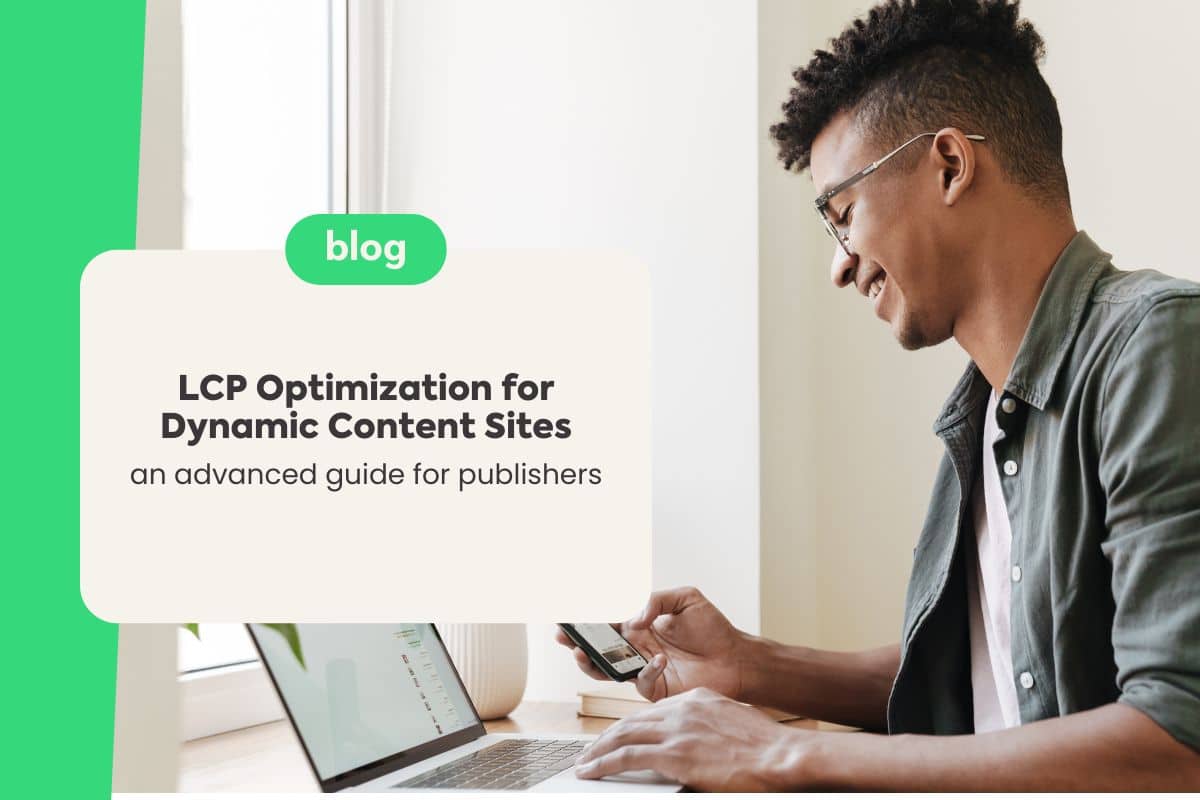In this advanced guide, we’ll address essential strategies for optimizing the Largest Contentful Paint (LCP) on sites with dynamic content. Specifically aimed at publishers and advanced developers, this article offers a deep dive into current and effective optimization techniques, always with the goal of improving loading speed and user experience.
Index
Understanding LCP
LCP is a performance metric that measures the time until the largest content element in the viewport becomes visible to the user, being one of the pillars of Google’s Core Web Vitals. For news sites, blogs, and content platforms, where the first impression is fundamental, a fast LCP can mean the difference between an engaged user and a lost visitor. Tools like PageSpeed Insights and Lighthouse are indispensable for measuring LCP and identifying areas for optimization.
What is Dynamic Content?
Before proceeding, it’s important to clarify what characterizes dynamic content. Unlike static content, which remains the same for all users, dynamic content changes based on user interactions, contextual information, or in real-time. Examples include updated news feeds, social media widgets reflecting recent activities, and personalized ads based on the user’s browsing behavior.
Dynamic content makes sites more interactive and relevant to the user but also adds complexity to LCP optimization, as additional scripts, third-party elements, and API calls can increase loading time.
Challenges of LCP in Dynamic Content
Dynamic content, including news feeds, social media widgets, and personalized ads, enriches the user experience but also introduces complexity in LCP optimization. Scripts and third-party elements, in addition to API calls, can significantly increase page loading time.
Strategies for Optimizing LCP
Resource Optimization
- Minifying and compressing HTML, CSS, and JavaScript: Tools like UglifyJS and CSSNano can reduce file sizes, accelerating loading time.
- Optimizing images and videos: Using modern formats like WebP for images and H.265 for videos can reduce file sizes without compromising quality.
- Implementing lazy loading and preloading: Loading images and videos only when they are about to enter the viewport and preloading critical resources can significantly improve LCP.
Page Architecture
- Minimizing scripts and third-party elements: Evaluating the necessity of each script and external element can eliminate unnecessary loading blocks.
- Using Content Delivery Networks (CDNs): Distributing content across multiple servers around the world can reduce response time.
- Separating dynamic content from static: Serving static content from servers or caches while dynamic content loads can improve the user’s perception of speed.
Advanced Tools and Techniques
- Implementing Critical CSS: Inserting the CSS necessary for loading the top part of the page directly into the HTML can accelerate rendering.
- Using Service Workers and Cache Storage: Caching static and dynamic content in the user’s browser for faster loads on subsequent visits.
- Optimizing server-side rendering (SSR): Generating the HTML on the server allows the content to be rendered more quickly by the browser.
Monitoring and Continuous Improvement
LCP optimization is a continuous process that requires constant monitoring and regular adjustments. Dedicated SEO tools and A/B testing are crucial for understanding the impact of implemented changes and identifying new optimization opportunities.
Additional Considerations for Publishers
Improving LCP does not mean sacrificing the dynamic content that makes a site unique. It’s possible to achieve a balance between fast loading and a rich, engaging experience. Accessibility and security should not be neglected, as they contribute to user trust and satisfaction.
Conclusion
Optimizing LCP for sites with dynamic content is a technical challenge that offers significant rewards. By adopting the strategies and tools mentioned, publishers can significantly improve loading speed and, consequently, user experience and positioning in search results. Importantly, the implementation of tags, as part of the Grumft strategy, does not negatively interfere with LCP optimization, allowing publishers to maintain or even improve their search rankings without compromising site functionality.
In a constantly evolving digital landscape, staying updated with the best practices for LCP optimization is essential for the continued success of publishers and advanced developers.





